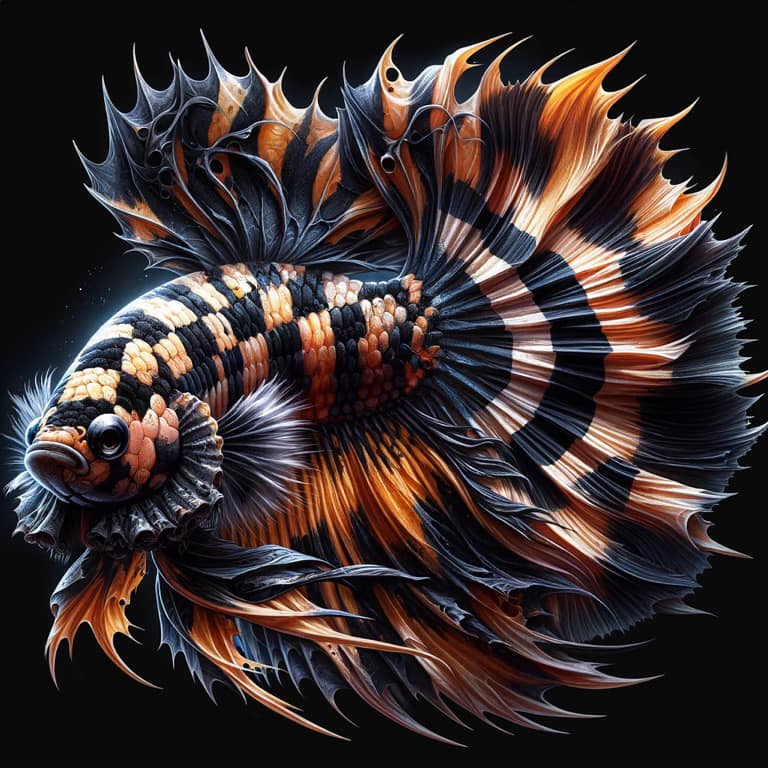Comprehending Betta Fish Habits: What Every Proprietor Must Know
How to Breed Betta Fish Successfully: Expert Techniques and Insights for Hobbyists Wanting To Expand Their Betta Collection
Breeding Betta fish requires a nuanced understanding of genetics and ecological problems, making it vital for hobbyists to approach the procedure with both persistance and care. Producing an optimal reproduction atmosphere, picking the appropriate pairs, and observing the complexities of their courtship actions are fundamental actions that can significantly impact the end result. The subsequent care of the fry is critical for guaranteeing their healthy and balanced growth. As we discover these crucial components, it ends up being clear that successful breeding is not practically the preliminary pairing yet encompasses a wider method that benefits careful factor to consider.
Comprehending Betta Fish Genes
Understanding the genetics of Betta fish is crucial for effective breeding, as it affects attributes such as color, fin shape, and actions. Betta fish exhibit a diverse selection of colors and patterns, largely determined by their hereditary make-up. The primary genetics liable for pigmentation consist of the "B" gene for blue, "D" gene for red, and the "C" genetics for shade intensity. Breeders can adjust these qualities by choosing particular parent fish that show wanted characteristics.
Along with pigmentation, fin morphology is one more substantial element of Betta genes (betta fish). The sizes and shape of fins are influenced by various genes, including those that determine whether the fins are brief, long, or veil-shaped. Recognizing these genetic variations aids dog breeders predict the phenotypic end results of their children
Moreover, behavioral attributes such as aggression and territoriality can additionally be affected by genes. These habits play a vital role in the reproducing procedure, as they can impact generating success and the general personality of the resulting fry. By thoroughly recognizing these hereditary concepts, breeders can make enlightened decisions, inevitably improving their reproduction programs and accomplishing preferable results.
Preparing the Breeding Setting
Creating an ideal reproduction atmosphere is crucial for the successful recreation of Betta fish. The first step in preparing this environment is to pick a suitable breeding container, ideally varying from 5 to 10 gallons.
Following, consider the usage of a sponge filter or an air stone to supply mild water blood circulation without producing solid currents that can worry the fish. It is vital to install plants or breeding cones to use concealing spots and advertise comfort for the lady throughout the spawning process. Drifting plants, such as Java moss or water sprite, can likewise produce a more natural surroundings while helping with bubble nest building by the man.
Prior to introducing the reproducing pairs, make sure the water is conditioned and without unsafe chemicals, such as chlorine or heavy metals. betta fish. Regular water adjustments need to be performed to preserve optimum water quality, improving the opportunities of effective reproduction. With these prep work in location, the breeding environment will certainly support the health and wellness of both Betta fish
Picking Reproduction Pairs
Selecting the best reproduction pairs is vital for achieving successful Betta fish reproduction. When picking your reproduction pairs, consider several key aspects consisting of health and wellness, character, and genetics. Healthy and balanced Betta fish display dynamic colors, clear eyes, and energetic habits. Selecting fish that are complimentary from illness guarantees a much better possibility of creating practical spawn.
Temperament is another vital consideration, as Betta fish are recognized for their aggressive nature. It is advisable to pick a male and woman that exhibit compatible personalities to minimize anxiety throughout the reproducing procedure. A tranquil man can motivate a smoother courtship, while a female that is as well hostile may interfere with the process.
Genetic background likewise plays a significant duty in the high quality of the offspring. Reproducing fish that are genetically diverse can minimize the risk of hereditary health concerns learn the facts here now and improve the overall vigor of the fry. It is advantageous to research the lineage of both the male and lady, concentrating on desirable characteristics such as fin kind, color patterns, and size.
The Reproduction Refine
The breeding process of Betta fish requires careful planning and interest to information to ensure an effective outcome. Initially, it is crucial to prepare an appropriate breeding storage tank, ideally a 5-10 gallon fish tank with a temperature maintained at 78-80 ° F. The storage tank must be furnished with a heating unit, filter (ideally sponge kind to stay clear of strong currents), and a lot of water plants for the female to hide.
Once the setting is set, present the selected reproducing set to the storage tank, enabling them to acclimate. Observe their habits; the man will present intricate courtship routines, consisting of flaring his fins and developing a bubble nest. If the lady shows interest, she will certainly display upright red stripes showing readiness for spawning.
When the woman is receptive, the pair will certainly participate in a breeding welcome, throughout which the male fertilizes the eggs. It is important to check their communications closely, as the man may become aggressive. After spawning, eliminate the lady to avoid possible injury. The man will have a tendency to the eggs, which usually hatch within 24-36 hours. Keeping optimal water conditions throughout this duration is necessary for the development of healthy and balanced Betta fry.
Caring for Betta Fry

Feeding Betta fry is critical, as they call for a diet plan high in protein. At first, they can be fed infusoria or fluid fry food, transitioning go to these guys to finely crushed high-grade pellets as they grow. Feed little portions multiple times a day to encourage healthy growth without overwhelming the tank with uneaten food.

As they mature, check their growth carefully and separate any type of hostile individuals to avoid harm. By offering a nurturing setting and proper nourishment, hobbyists can effectively elevate Betta fry into vivid, healthy fish, ultimately boosting their reproduction ventures.
Verdict
Successful Betta fish breeding requires thorough attention to genetic selection, ecological conditions, and look after the fry. By recognizing the genetics of Betta fish and preparing a proper breeding atmosphere, hobbyists can boost the opportunities of creating vivid, healthy spawn. Picking compatible reproduction sets and carefully keeping track of the courtship and generating processes are vital. Lastly, providing optimum care for the fry ensures their healthy and balanced advancement, contributing to a growing Betta collection.